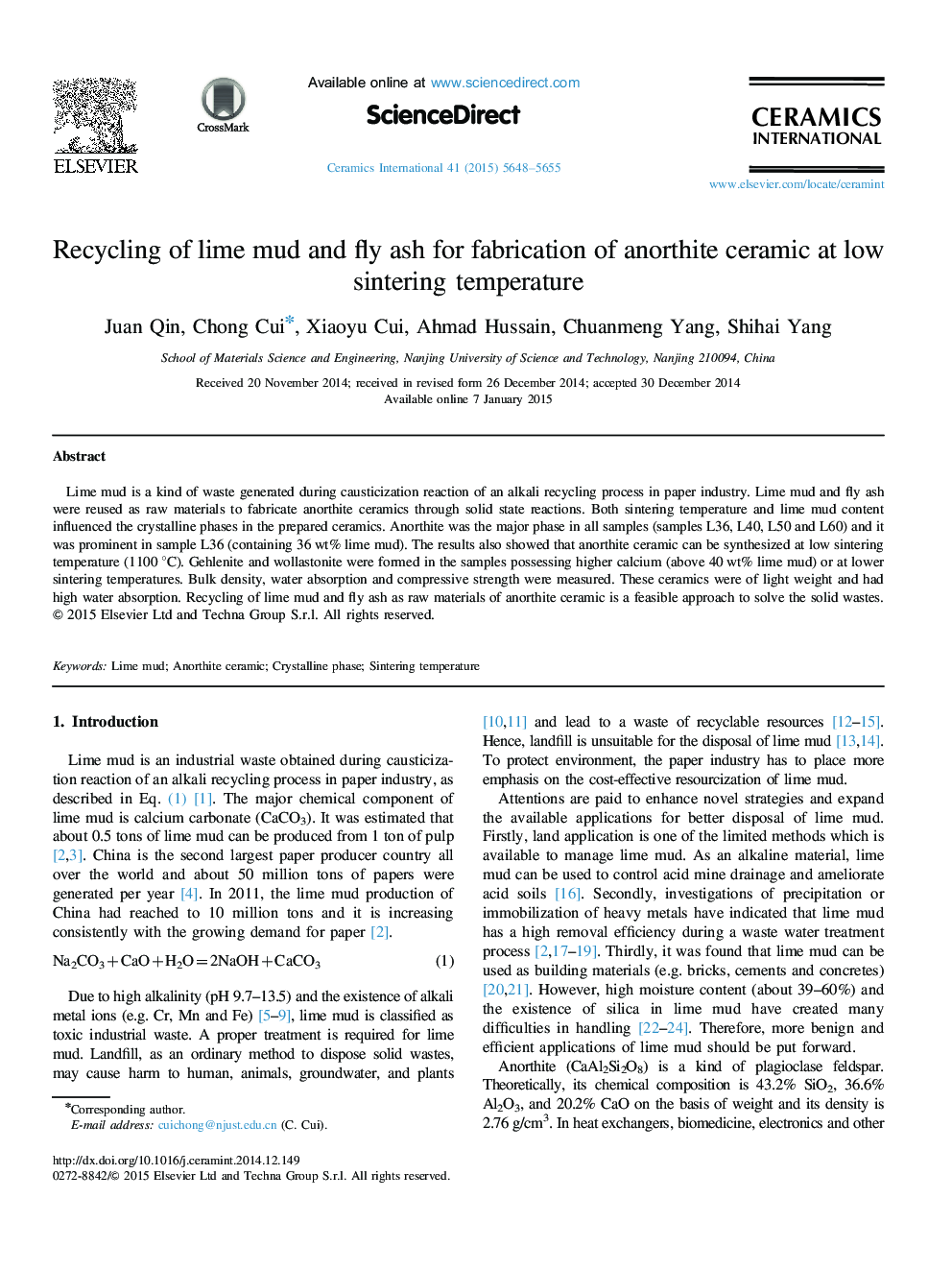| Article ID | Journal | Published Year | Pages | File Type |
|---|---|---|---|---|
| 1460143 | Ceramics International | 2015 | 8 Pages |
Lime mud is a kind of waste generated during causticization reaction of an alkali recycling process in paper industry. Lime mud and fly ash were reused as raw materials to fabricate anorthite ceramics through solid state reactions. Both sintering temperature and lime mud content influenced the crystalline phases in the prepared ceramics. Anorthite was the major phase in all samples (samples L36, L40, L50 and L60) and it was prominent in sample L36 (containing 36 wt% lime mud). The results also showed that anorthite ceramic can be synthesized at low sintering temperature (1100 °C). Gehlenite and wollastonite were formed in the samples possessing higher calcium (above 40 wt% lime mud) or at lower sintering temperatures. Bulk density, water absorption and compressive strength were measured. These ceramics were of light weight and had high water absorption. Recycling of lime mud and fly ash as raw materials of anorthite ceramic is a feasible approach to solve the solid wastes.
